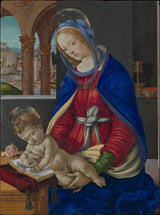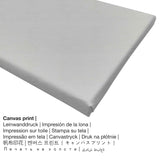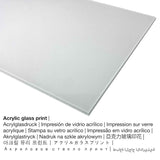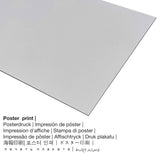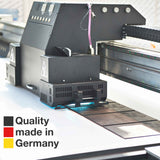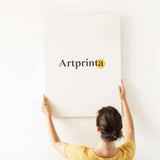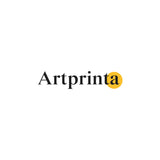Filippino Lippi, 1483 - Madonna na Nwa - mbipụta nka mara mma
Ụtụ gụnyere. Mbupu gbakọrọ na ndenye ọpụpụ.
The painting "Madonna and Child" as your art copy
In 1483 Filippino Lippi created this 15th century masterpiece. The beyond 530 Original dị afọ nwere nha: 32 x 23 1/2 na (81,3 x 59,7 cm). Tempera, mmanụ, na ọla edo n'elu osisi was used by the artist as the technique for the masterpiece. This work of art is included in the digital art collection of The Metropolitan Museum of Art. We are delighted to reference that this ngalaba ọha artpiece is included with courtesy of The Metropolitan Museum of Art, New York, The Jules Bache Collection, 1949. Moreover, the artwork has the following creditline: Nchịkọta Jules Bache, 1949. Ọzọkwa, alignment bụ na Eserese format ya na oke nke 3: 4, nke pụtara na ogologo bụ 25% mkpụmkpụ karịa obosara. Filippino Lippi was a male painter from Italy, whose style can be classified as Early Renaissance. The painter was born in the year 1457 in Prato, Prato province, Tuscany, Italy and deceased at the age of 47 n'afọ 1504.
Original artwork specifications as provided by the museum (© Copyright - The Metropolitan Museum of Art - www.metmuseum.org)
In this picture the sacred and the everyday intersect. The Madonna and Child are shown in a contemporary Florentine palace. Through the window is an arcade with the armorial device of the wealthy Florentine banker Filippo Strozzi (three crescents). The background evokes the area around the Strozzi villa near Florence, where the picture probably hung. Black Africans can be seen on a bridge spearing fish and outside a house performing domestic tasks. Enslaved servants from sub-Saharan Africa began arriving in Florence from Portugal in the 1460s, as the slave trade of non-Christian peoples in the Eastern Mediterranean was disrupted by the Ottoman conquests.
Data ndabere na akụkụ nka pụrụ iche
| Aha nka nka: | "Madonna na nwa" |
| Nhazi nka: | sere |
| Okwu nche anwụ: | nka ochie |
| Time: | 15th narị afọ |
| Afọ nka: | 1483 |
| Afọ nka: | ihe karịrị afọ 530 |
| Ọkara nke ihe osise izizi: | tempera, mmanụ, na ọla edo n'elu osisi |
| Ogo nke ọrụ nka izizi: | 32 x 23 1/2 na (81,3 x 59,7 cm) |
| Ụlọ ihe ngosi nka / ebe: | Museumlọ ihe ngosi nka nke Obodo |
| Ebe ngosi nka: | New York City, New York, Njikota Obodo Amerika |
| website: | www.metmuseum.org |
| Licensedị ikike: | ngalaba ọha |
| Site n'aka: | Ụlọ ihe ngosi nka nke Metropolitan, New York, mkpokọta Jules Bache, 1949 |
| Ebe kredit nke ọrụ nka: | Nchịkọta Jules Bache, 1949 |
Tebụl nkọwa omenkà
| aha: | Filippino Lippi |
| Aha ndị ọzọ: | Filippino Fiorentino, Filippino Lippi, Lippi Filippino, Philippe Lippi fils, Lippi |
| Gender: | nwoke |
| Obodo onye nka: | Italian |
| Ọrụ nke onye na-ese ihe: | onye na-ese ihe |
| Country: | Italy |
| nhazi ọkwa: | nna ukwu ochie |
| Ụdị nka: | Renaissance mmalite |
| Nwụrụ na afọ nke: | 47 afọ |
| Afọ ọmụmụ: | 1457 |
| Ebe amụrụ onye: | Prato, Prato Province, Tuscany, Italy |
| Nwuru: | 1504 |
| Nwụrụ na (ebe): | Florence, mpaghara Firenze, Tuscany, Italy |
Ngwa ngwaahịa nke ị nwere ike ịhọrọ:
In the dropdown selection next to the article you can choose the size and material of your choice. You can choose among the following product customization options:
- Mbipụta iko acrylic (nke nwere ezigbo mkpuchi iko): A glossy acrylic glass print, often denoted as a UV print on plexiglass, will change your favorite original into wonderful décor and offers a good alternative to dibond or canvas prints. The work of art is custom-made with the help of state-of-the-art UV print machines. This creates rich and deep color hues. The great upside of an acrylic glass art print is that contrasts and also minor painting details will be more recognizeable with the help of the very subtle gradation in the picture. The acrylic glass protects your custom fine art print against light and heat for several decades.
- Aluminom ihe eji eme ihe: This is a metal print made on aluminium dibond with a true depth effect. For the Direct Aluminium Dibond print, we print the favorite artpiece right on the surface of the aluminum. This UV print on aluminium is the most popular entry-level product and is a truly contemporary way to showcase art, as it puts the viewer’s focus on the image.
- Mpempe akwụkwọ ederede (akwa akwa akwa): Our poster is a printed cotton canvas with a slightly rough surface finish. It is ideally suited for putting your art replica with the help of a customized frame. Please note, that depending on the absolute size of the canvas poster print we add a white margin 2 - 6cm around the print motif in order to facilitate the framing with your custom frame.
- Kwaaji: The UV printed canvas material stretched on a wood frame. The advantage of canvas prints is that they are relatively low in weight. This means, it is easy to hang your Canvas print without the support of additional wall-mounts. Canvas prints are suitable for all kinds of walls in your house.
Tebụl edemede
| Bipụta ngwaahịa: | ọrụ mgbidi |
| Mmeputakwa: | mmeputakwa n'ụdị dijitalụ |
| Usoro nhazi: | Mbipụta UV / dijitalụ |
| Mmalite ngwaahịa: | arụpụtara na Germany |
| Stockdị ngwaahịa: | a na-achọ |
| A na-atụ aro iji ngwaahịa eme ihe: | imewe ụlọ, mgbidi gallery |
| Ndozi onyonyo a: | nhazi ihe osise |
| Oke akụkụ onyonyo: | 3: 4 |
| Mmetụta akụkụ: | ogologo bụ 25% mkpụmkpụ karịa obosara |
| Ụdị ihe dị iche iche: | mbipụta akwụkwọ mmado (akwụkwọ kwaaji), mbipụta kanvas, mbipụta enyo acrylic (nwere ezigbo mkpuchi iko), mbipụta ọla (aluminium dibbond) |
| Mbipụta kanvas (akwa akwa na etiti ihe ndọtị): | 30x40cm - 12x16", 60x80cm - 24x31", 90x120cm - 35x47", 120x160cm - 47x63" |
| Mpempe iko acrylic (nwere ezigbo mkpuchi iko) nha dị iche iche: | 30x40cm - 12x16", 60x80cm - 24x31", 90x120cm - 35x47", 120x160cm - 47x63" |
| Ụdị akwụkwọ mmado (akwụkwọ kwaaji) dị iche iche: | 30x40cm - 12x16", 60x80cm - 24x31", 90x120cm - 35x47" |
| Mbipụta aluminom: | 30x40cm - 12x16", 60x80cm - 24x31", 90x120cm - 35x47" |
| Nhazi nke nka nka: | oyiri nka na-enweghị isi |
Ederede iwu dị mkpa: We try everything to depict the art products as closely as possible and to demonstrate them visually on the various product detail pages. However, the pigments of the printing material and the printing can diverge somehwat from the image on the device's monitor. Depending on the settings of your screen and the condition of the surface, not all color pigments are printed one hundret percent realistically. In view of the fact that all the art prints are processed and printed manually, there might as well be slight discrepancies in the exact position and the size of the motif.
© nwebiisinka, Artprinta.com

